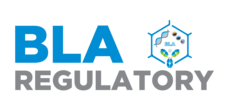RMAT: The Regulatory Catalyst for Accelerating Regenerative Medicine Therapies
April 16, 2025
In the wave of medical technological revolution, regenerative medicine therapies (e.g., cell therapy, gene editing, tissue engineering) are reshaping disease treatment at an unprecedented pace. However, traditional regulatory approval processes often lag technological innovation, delaying the availability of breakthrough therapies to patients. In 2016, the U.S. Food and Drug Administration (FDA) established the Regenerative Medicine Advanced Therapy (RMAT) pathway through the 21st Century Cures Act, aiming to expedite the development and approval of these therapies via a flexible regulatory framework. This initiative provides a new paradigm for addressing refractory diseases such as cancer and rare disorders, bridging the gap between “Fast Track” and “Breakthrough Therapy” designations by enabling early FDA engagement, frequent guidance, and accelerated market access.
II. Core Mechanisms and Advantages of RMAT
1. Eligibility Criteria
To qualify for RMAT designation, therapy must meet three requirements:
- Technical Attributes: Conform to the FD&C Act’s definition of regenerative medicine therapies, encompassing cell/gene therapies, tissue engineering, or combination products with a biological constituent as the primary therapeutic driver.
- Clinical Potential: Demonstrate preliminary evidence of treating, modifying, reversing, or curing a serious condition through controlled trials, historical controls, or systematic case series.
- Unmet Medical Need: Address gaps in existing treatments, validated by rigorous data collection and outcome consistency.
2. Accelerated Pathway Comparison
RMAT distinguishes itself from other expedited programs through its focus on regenerative medicine’s unique technical and safety requirements:
| Program | Eligible Products | Key Requirements | Unique Benefits |
|---|---|---|---|
| Fast Track | Serious-condition therapies | Preclinical/clinical data indicating potential | Rolling review, priority review eligibility |
| Breakthrough Therapy | Serious-condition therapies | Preliminary evidence of substantial improvement over standard care | Intensive FDA guidance, senior management involvement |
| RMAT | Regenerative medicine therapies for Serious Conditions | Preliminary evidence of addressing unmet needs | Accelerated approval flexibility (surrogate endpoints/multi-site data) + real-world evidence post-approval |
3. Advantages
- Early and Frequent Engagement: FDA involvement via pre-IND, end-of-Phase 2, and pre-BLA meetings to guide trial design and endpoint selection.
- Expedited Approval: Permits approval based on surrogate endpoints (e.g., biomarker improvements) or multi-site data (provided bias is minimized). Includes all the benefits of Fast Track and Breakthrough Therapy designations, such as priority review and rolling review, which further expedite the approval process.
- Use of Real-World Evidence: Allows the use of real-world evidence to support the approval process. This is particularly useful for rare diseases where large-scale clinical trials may not be feasible
III. Case Studies: RMAT in Action
1. CT103A (CAR-T Therapy for Multiple Myeloma)
- IASO Bios’ CT103A is an autologous CAR-T therapy targeting B-cell maturation antigen (BCMA) for relapsed/refractory multiple myeloma. Using a lentiviral vector, it achieved rapid and durable responses in early trials. After receiving Breakthrough Therapy designation in China, its RMAT status in 2024 accelerated global development, highlighting cross-border regulatory synergy.
2. RP-A501 (LAMP2 Gene Therapy for Danon Disease)
- Rocket Pharmaceuticals’ RP-A501, an AAV9-based gene therapy restoring LAMP2 protein expression in Danon disease (a fatal cardiomyopathy), received RMAT designation in 2023 based on Phase I data showing stabilized cardiac biomarkers and functional improvements. Its Phase II trial uses biomarker-driven endpoints to expedite approval.
3. VY-AADC (Gene Therapy for Parkinson’s Disease)
- Voyager Therapeutics’ AAV2-based therapy enhances dopamine production in Parkinson’s patients by delivering the AADC enzyme. Granted RMAT status in 2018 following sustained motor improvement in Phase Ib trials, it exemplifies RMAT’s role in neurodegenerative diseases.
4. Mesoblast’s MPC-150-IM (Heart Failure)
- Mesoblast’s mesenchymal precursor cell therapy, approved via multi-site data, established a regulatory precedent for stem cell applications in chronic diseases.
IV. Impact and Challenges
By the end of 2024, the FDA had granted over 100 RMAT designations, with 7 products approved for marketing. More than 50% of RMAT applications targeted rare diseases such as Danon disease and stiff-person syndrome (SPS), filling gaps in conventional treatments and driving significant industry focus on rare and complex conditions.
While gene editing and induced pluripotent stem cell (iPSC) technologies are accelerating the process of transformation into the clinical application stage, RMAT faced challenges: half of applications were rejected due to insufficient data or safety concerns, and long-term risks (e.g., oncogenicity) required 10–15 years of monitoring. Additionally, high therapy costs may limit accessibility, necessitating a balance between innovation and public health needs.
V. Future Directions
In response to technological advancements, RMAT is evolving from a regulatory tool to an innovative ecosystem. Future efforts will deepen the use of real-world evidence in approval and post-market surveillance, develop adaptive regulatory frameworks for emerging fields like induced pluripotent stem cells (iPSC) and in vivo gene editing, and promote multinational trials and data sharing to reduce development costs. Concurrently, ethical review mechanisms must be established to ensure therapies align with societal values.
VI. Conclusion
RMAT serves as more than a regulatory tool—it is a catalyst for regenerative medicine innovation. By balancing scientific flexibility with stringent standards, RMAT is reshaping drug development. As technology and regulation evolve in tandem, RMAT is poised to become a cornerstone in addressing humanity’s most challenging diseases, transforming “impossible” therapies into clinical realities while upholding safety and equity.

